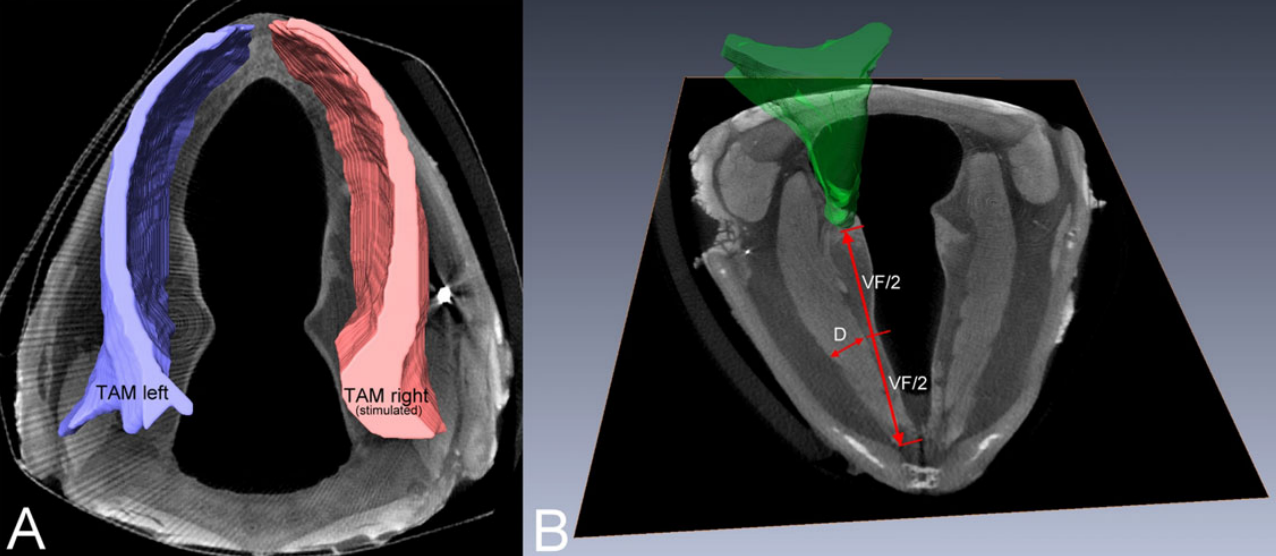Functional Electrical Stimulation Leads to Increased Volume of the Aged Thyroarytenoid Muscle

A stimulation electrode was placed unilaterally near the terminal adduction branch of the recurrent laryngeal nerve (RLN) adjacent to the right cricothyroid joint. The electrode was connected to an implant located subcutaneously at the neck region. Predesigned training patterns were automatically delivered by a bidirectional radio frequency link using a programming device and were repeated automatically by the implant every other day over 11 weeks in the awake animal. Outcome parameters comprised volumetric measurements based on three-dimensional reconstructions of the entire thyroarytenoid muscle (TAM), as well as gene expression analyses. We found significant increases of the volumes of the stimulated TAM of 11% and the TAM diameter at the midmembranous parts of the vocal folds of nearly 40%. Based on gene expression, we did not detect a shift of muscle fiber composition. Functional electrical stimulation (FES) of the terminal branches of the RLN is a secure and effective way to reverse the effects of age-related TAM atrophy and to increase volumes of atrophied muscles.